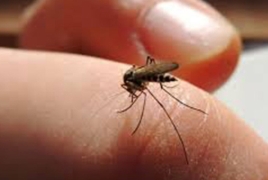
Despite being malaria-free since 2006, Armenia remains at risk of outbreaks due to environmental factors and potential reintroduction of the parasite.
Since 2006, no locally transmitted malaria cases have been recorded in Armenia. In 2011, the World Health Organization (WHO) certified the country as malaria-free. However, climate conditions, local mosquito vectors, and susceptible populations remain present, meaning that if the infection is reintroduced, new active outbreaks could emerge.
Malaria has historically affected Armenia, with absence only recorded during 1963–1994 and 2006–2025. It reemerged in 1994, prompting a national malaria control strategy in 2003, according to the YSMU’s Heratsi National Research Center for Health Programs.
World Malaria Day, observed annually on April 25 by decision of the World Health Assembly, aims to raise awareness about malaria prevention and treatment and promote global eradication efforts.
Malaria is a life-threatening ancient infectious disease. Since the late 1990s, global efforts have prevented around 2.2 billion cases and 12.7 million deaths. However, recent years have seen a slowdown in progress. Currently, one person dies every minute from malaria worldwide. Climate change, conflict, humanitarian crises, and economic instability hinder efforts, limiting access to early diagnosis, treatment, and prevention in endemic areas. Severe cases can lead to rapid death without prompt medical care.
In 2023, nearly 263 million malaria cases and 597,000 deaths were reported globally across 83 countries, as per WHO data. Africa bore 94% of cases and 95% of deaths, primarily among children under five. Other cases occurred in Asia, parts of Europe, the Middle East, and Latin America.
Malaria is caused by Plasmodium parasites, with five types infecting humans: P. falciparum (most dangerous and prevalent in Africa), P. vivax (dominant outside Africa), P. malariae, P. ovale, and P. knowlesi. Transmission typically occurs via bites from infected female Anopheles mosquitoes—mainly in tropical regions. In Armenia, A. maculipennis is the most common species. The disease can also spread via blood transfusion or contaminated medical tools.
Symptoms include fever, chills, and headaches in mild cases; in severe cases, convulsions, fatigue, breathing issues, and seizures may occur. High-risk groups include infants, children under five, pregnant women, individuals with HIV, and travelers to endemic areas.
Malaria is both preventable and treatable. Key preventive measures include:
- Mosquito protection:
- Use of mosquito nets while sleeping in endemic regions.
- Applying insect repellents during dark hours.
- Wearing protective clothing.
Installing insecticide-treated screens on windows.
Chemoprevention: Travelers to malaria-endemic countries should consult a physician for timely medication. Treatment typically starts 2–3 weeks before travel, continues during the trip, and lasts up to four weeks after potential exposure.
Vaccination: Since 2021, WHO has approved the RTS,S/AS01 vaccine for children in countries with moderate to high transmission of P. falciparum. In 2023, the R21/Matrix-M vaccine was also prequalified and is being integrated into national immunization programs in African countries.
WHO’s Global Technical Strategy for Malaria 2016–2030 sets three goals:
- Reduce malaria cases by at least 90% by 2030.
- Decrease malaria deaths by at least 90%.
- Eliminate malaria in at least 35 countries, preventing its return in cleared regions.

